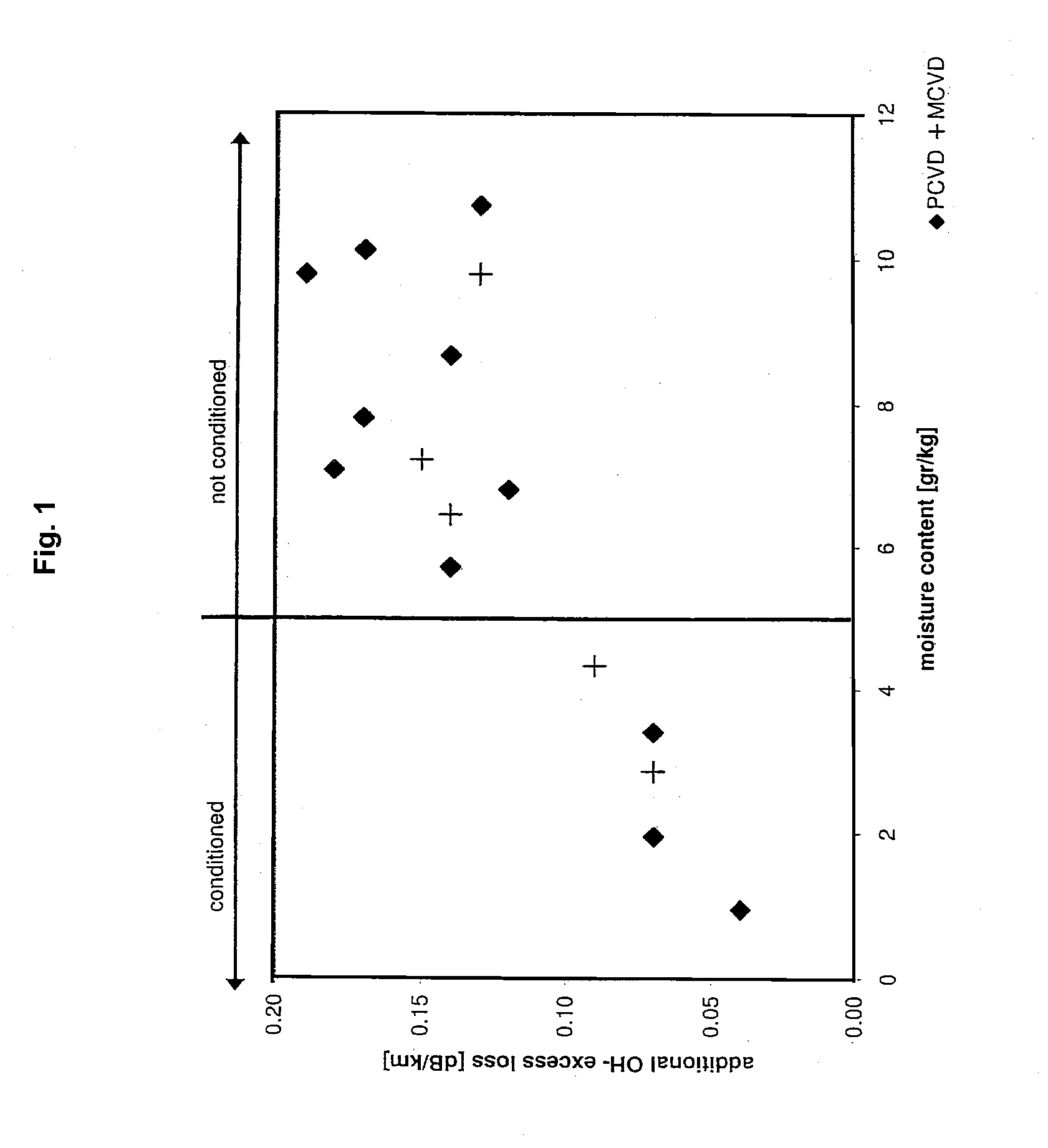Method of Manufacturing an Optical Fibre Preform
a manufacturing method and optical fibre technology, applied in glass making apparatus, manufacturing tools, instruments, etc., can solve the problems of increased attenuation losses and serious attenuation of the signal being carried, and achieve the effect of small attenuation losses and strong absorption peak
- Summary
- Abstract
- Description
- Claims
- Application Information
AI Technical Summary
Benefits of technology
Problems solved by technology
Method used
Image
Examples
Embodiment Construction
[0012]The invention as referred to in the introduction is characterized in that the deposition step is carried out in an environment in which the substrate is present in a conditioned atmosphere, which conditioned atmosphere has a moisture content lower than that of the non-conditioned atmosphere.
[0013]It has appeared to be possible to achieve a significant reduction of the attenuation losses caused by hydroxyl groups by conditioning the environment in which the preforms for the glass fibre production are manufactured. The term “conditioned atmosphere” is to be understood to mean an atmosphere having a significantly lower moisture content than the atmosphere that has generally been used so far.
[0014]For an internal deposition process in which glass-forming compounds are added to the interior of a substrate tube, which substrate tube is contracted into a solid preform, it is desirable that the contraction step be carried out in an environment in which the atmosphere is conditioned, w...
PUM
| Property | Measurement | Unit |
|---|---|---|
| humidity | aaaaa | aaaaa |
| humidity | aaaaa | aaaaa |
| temperature | aaaaa | aaaaa |
Abstract
Description
Claims
Application Information
 Login to View More
Login to View More - R&D
- Intellectual Property
- Life Sciences
- Materials
- Tech Scout
- Unparalleled Data Quality
- Higher Quality Content
- 60% Fewer Hallucinations
Browse by: Latest US Patents, China's latest patents, Technical Efficacy Thesaurus, Application Domain, Technology Topic, Popular Technical Reports.
© 2025 PatSnap. All rights reserved.Legal|Privacy policy|Modern Slavery Act Transparency Statement|Sitemap|About US| Contact US: help@patsnap.com

